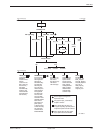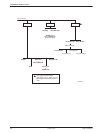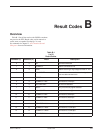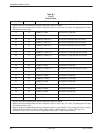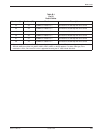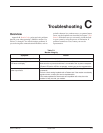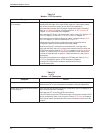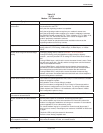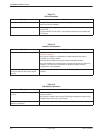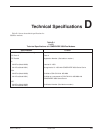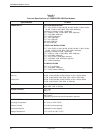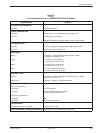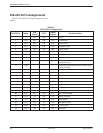
Troubleshooting
C-33980-A2-GB30-40 October 1998
Table C-3
(2 of 2)
Modem – VF Connection
Symptom Action
Modem goes off-hook, answers, but does
not connect
Perform a Local Analog Loopback test and verify that data entered at the DTE
is echoed back to the DTE.
Verify that the originating modem is compatible.
Verify that originating modem recognizes your modem’s answer tone.
Verify that originating modem supports your modem’s modulation schemes.
The 3800
Plus
modem recognizes ITU-T V.34, V.32
terbo
, ITU-T V.32bis, V.32,
V.22bis, V.22, V.21, Bell 212A, and Bell 103J. It does not support other
vendors’ proprietary modulation schemes.
Force your modem to operate at the same modulation scheme as the
originating modem to see if they connect.
Originate Mode Verify that the modem’s DTE Dialer configuration option is set to the correct
setting: either AT, DTR Dialing, V.25bis Async, V.25bis Bisync, or V.25bis
HDLC.
Modem does not go off-hook and begin
dialing
If using AT Dialing, refer to Table C-2, Modem – DTE Connection.
If using DTR Dialing, verify the telephone number stored in directory
location 1, and verify that the DTE is raising DTR from Off to ON to initiate a
dial.
If using V.25bis Async, verify that the correct character format is set to 7 data
bits with even parity and 1 stop bit, and the carriage return and line feed are
used as command terminators.
If using V.25bis Bisync, verify that the correct character format uses two
synchronous control characters and a start-of-text control character before
the text block and an end-of-text control character after the text block.
If using V.25bis HDLC, verify that the correct character format uses flag,
address, and control characters before the text block and a frame sequence
check and flag after the text block.
Modem dials but does not connect If the modem is operating behind a PBX, verify if a 9 and comma are needed
before the telephone number.
Verify whether Tone or Pulse dialing is needed.
Verify if one modem is configured for Error Control or Disconnect and the
other modem is configured for no Error Control. Try calling in Buffer mode.
If both modems use V.32bis or V.32 modulation, set the modem’s V.32bis
Train configuration option to Long.
Intermittent disconnects, high error rates,
or excessive retransmissions
Perform an End-to-End test. Refer to
Pattern
located in Chapter 7,
Test
Branch
.
Modem establishes and disconnects a
call
You may have a poor VF connection. Disconnect and dial again.
The remote modem may have encountered an EC Disconnect, where the
modem is configured to establish a call using error correction. If the modems
cannot negotiate EC, then a disconnect occurs.
The remote modem may be in a forced Error Control mode (disconnect if
there is no error control). Reconfigure your modem to V.42/MNP or Buffer and
try again.
Check the LCD to verify the reason for disconnect.
Perform a Local Analog Loopback test.
High error rates occur when running a
local loopback or self-test
Incoming rings can cause data errors during a loopback test. Abort the test,
disconnect the modular VF cord, and restart the test.



